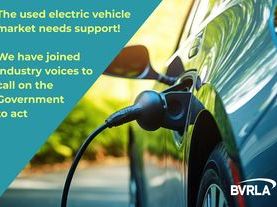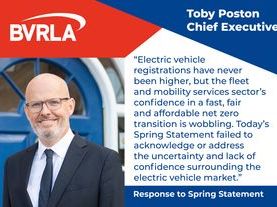Private motorists are beginning to catch up to business users when it comes to EV adoption, as personal lease agreements (PCH: personal contract hire) tracked in line with ZEV mandate targets last quarter. Battery Electric Vehicles accounted for 21% of new PCH additions to the BVRLA’s leasing fleet in Q2 2024, although the association is warning that the uplift risks being short-lived if the used EV market is not stabilised.
The latest Leasing Outlook report shows the BVRLA leasing fleet grew 3% year on year, with positive performance exclusive to cars (up 4.1%) while demand for vans remains flat. Continuing what is now an established trend, Business Contract Hire (BCH) saw demand climb, as did Salary Sacrifice. Private motorists have felt the pinch of widespread cost-of-living increases, causing total demand for PCH to fall 13.2% year on year.
Despite the mixed overall picture, both business and personal sectors have seen uplift in demand for battery electric vehicles (BEV). Business users are leading the transition to cleaner, greener vehicles, supported by targeted incentives and corporate sustainability strategies. Half of BCH additions in Q2 2024 were BEVs, placing it years ahead of the rest of the market when it comes to decarbonisation.
Incentives for private motorists are less prevalent, although demand for BEVs is still on the up. Factors driving the change are more vehicles coming to market and manufacturers adapting pricing to help them meet their obligations under the terms of the Zero Emission Vehicle (ZEV) mandate.
The Leasing Outlook report also shows the impact on the sector of falling values of used electric vehicles. As the sector leading the transition, leasing companies are absorbing the high risks that come with a developing market, protecting their customers from the associated volatility.
Leasing companies are responding to the high levels of vehicle depreciation, shown in the increased availability of used EV leasing, and longer initial rental periods. Such approaches are making EVs affordable to SMEs, private motorists and a wider number of drivers with access to a salary sacrifice scheme.
Toby Poston, BVRLA Director of Corporate Affairs, said: “The data is clear. Leasing remains the most effective way for drivers to transition to cleaner vehicles, with drivers happy to switch when the price is right. The pace of change between different sectors is stark. Where businesses have been quick off the mark, personal demand is slowly showing signs of catching up. Vans remain stuck in the starting blocks.
“The government’s decarbonisation deadlines are optimistic. While the latest data is encouraging, the transition remains fragile. One or two quarters with pockets of positive performance do not guarantee long-term success, with the long-anticipated challenge of an immature used EV market now on our doorstep. Without greater government support, meeting the mandate and ICE phase-out deadlines are at major risk.”
The BVRLA’s Leasing Outlook report is produced quarterly, with the latest version containing data to end of Q2 2024. The statistics and analysis are bolstered by commentary from Fleet Assist (SMR trends), Cap HPI (used car values) and Auto Trader (Trends in new and used demand).
-ENDS-




